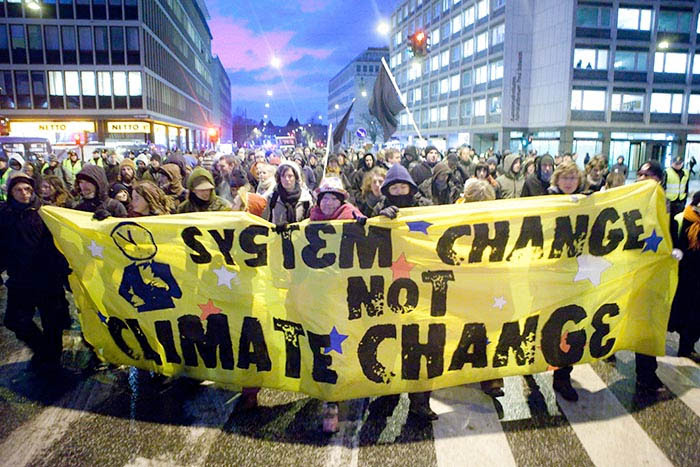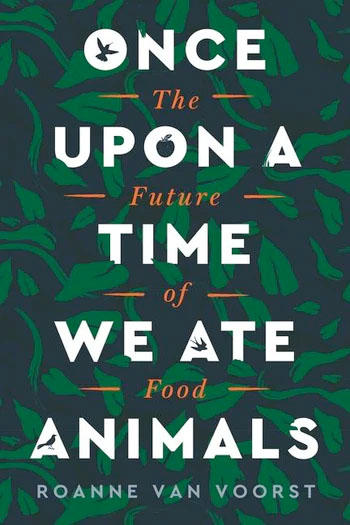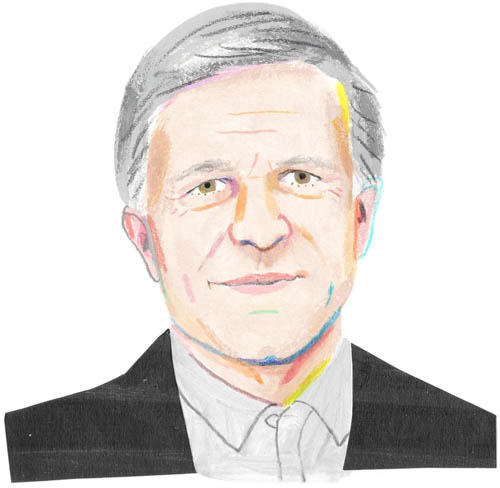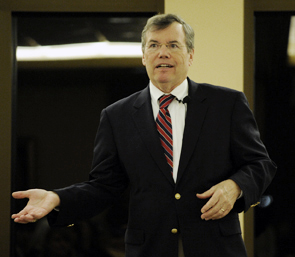 | | |  November has seen the best of times and the worst of times. Gun deaths at Walmart, an LGBTQ+ nightclub, the historic University of Virginia, and more have traumatized the nation and students, leading RCC President & CEO Bob Musil, among many, to speak out against American “gun culture.” November has seen the best of times and the worst of times. Gun deaths at Walmart, an LGBTQ+ nightclub, the historic University of Virginia, and more have traumatized the nation and students, leading RCC President & CEO Bob Musil, among many, to speak out against American “gun culture.” And, as Americans went to the polls, there was widespread fear of results that would threaten democracy and send a wave of insurrectionist and climate-change denying officials rolling into office. But when most votes were finally tallied, there was relief as the predicted “Red Wave” turned into a green tide — a surprising, historic performance by pro-environment, pro-democracy, and pro-civil rights, mostly Democratic, candidates.  As RCC’s Claudia Steiner has reported, the surge at Federal, state and local levels was driven by strong turnout among youth voters, as “about 27% of people ages 18-29 cast a according to an initial estimate by the Center for Information & Research on Civic Learning and Engagement (CIRCLE) at Tufts University.” And research shows that student voting is closely tied to student engagement on and off campus. As RCC’s Claudia Steiner has reported, the surge at Federal, state and local levels was driven by strong turnout among youth voters, as “about 27% of people ages 18-29 cast a according to an initial estimate by the Center for Information & Research on Civic Learning and Engagement (CIRCLE) at Tufts University.” And research shows that student voting is closely tied to student engagement on and off campus.
Another back from the brink moment also rescued hope from despair at the recent international climate conference, COP27, in Sharm El-Sheikh, Egypt. There a historic agreement came together as the U.S. reversed its long-standing opposition and agreed to the creation of a new “Loss and Damage” Fund for Vulnerable Countries. The new fund should, in the coming years, help those countries most vulnerable to and least responsible for the adverse impacts of climate change. As these dramatic events unfolded, campuses across the United States continued their leadership in efforts to become more sustainable -- to electrify, decarbonize, reduce pesticide use, improve upon the sourcing of campus food, and divest! In this issue, for example, we highlight Colby College’s celebration of fifty years of clean water and its “rock star” Assistant Professor of Environmental Studies, Stacy-Ann Robinson, who carries out world-class climate change research with her undergraduates. Robinson also arranged for the first Colby delegation to attend climate negotiations at COP27. Interestingly, Robinson’s research includes how to finance the sort of loss and damage fund that was adopted in Sharm El-Sheikh. The University of Santa Barbara’s Marine Science Institute is also featured, as the work of its Professor of Earth Sciences and Biology, David Valentine, confirmed the presence and harmful effects on marine and human life of over 2,000 long-submerged barrels of DDT that had been dumped off the coast. But many colleges and universities still have a long way to go to be truly green, as our stories on the influence of fossil fuel corporations on campus reveal. That is why this November, we feature a full, rich section of writing from our 2022-2023 RCC Fellows. Their engagement and campus environmental leadership show why the future looks bright for campus sustainability, for electoral and civic engagement, and for a future filled with advocates who will defend democracy and fight against global climate change. | | | | | | | |  Mackay Pierce, Associate Director Mackay Pierce, Associate Director
Drawing from his experience as a campus organizer and leader, Mackay serves as the Director of the Rachel Carson Council Campus Program and the RCC Fellowhsip Program. Originally from the heart of the Appalachian Mountains in Northeast Tennessee, he connects his passion for environmental protection to his love of the mountains he calls home. | | | | | | The Nation’s Youngest Voters Put Their Stamp on the Midterms, with Climate Change Top of Mind Maxwell Alejandro Frost, a 25-year-old community organizer, has become the first member of Generation Z elected to Congress after winning a House seat in Florida’s 10th Congressional District. The young Democrat’s victory came as his generation was also getting credit for helping to stop a red wave of Republican victories in Tuesday’s national midterm elections. | | | | | | Youth Voter Numbers Bolstered by Activism, Political Climate The early data on youth participation in the 2022 midterm elections has given student voting activists cause to rejoice. About 27% of people ages 18-29 cast a ballot, according to an initial estimate by the Center for Information & Research on Civic Learning and Engagement (CIRCLE) at Tufts University. It’s the second-highest youth participation rate in a midterm over the past 30 years, just slightly behind the turnout in 2018. | | | | | | Federal Judge Temporarily Halts Enforcement of Florida’s Stop WOKE Act in Public Colleges The STOP Woke Act — an expansive law that also targeted discussion at the state’s K-12 schools and employers — stems from a trend among conservatives surrounding race-related dialogue. Nationwide, they have demonized these discussions, saying they stoke division in American society. Republicans often link any talk of race with a long-standing academic framework known as critical race theory, which in part teaches racism is systemic. | | | | | | | | Earth Day, Every Day How campuses are reducing waste, cutting carbon, and maybe even saving the planet. The planet is warming. Between 2010 and 2019, annual global greenhouse emissions were at their highest levels in human history, according to an April 2022 Intergovernmental Panel on Climate Change (IPCC) report. “Without immediate and deep reductions across all sectors,” the IPCC declared, “limiting global warming to 1.5 degrees Celsius is beyond reach.” That number is important. Limiting rising temperatures to 1.5 degrees could halve the increase in sea levels that will occur by 2100. | | | | | |  | Colby’s Climate-Change Superstar Stacy-ann Robinson’s student-driven work is earning recognition across the globe. Elijah Bertan ’23 called Stacy-ann Robinson a “superstar.” Cindy Nguyen ’20 said her former professor and mentor was a “superwoman.” People at Colby have known the assistant professor of environmental studies was a rock star since she arrived on campus three years ago to teach international environmental policy and global climate policy. But Robinson’s proclivity for publishing research on climate change—and doing so frequently with her undergraduate students—now has many more experts across the country paying attention to her work. | | | | | | Colby Commemorates 50 Years of
Clean Water Nowadays, the Kennebec River is notable for sturgeon leaping up from the surface of the water and American bald eagles swooping down low. On summer days, whitewater rafters whoop their way down the Kennebec River Gorge, and fishermen cast their lines hoping for nibbles from trout, salmon, and smallmouth bass. But 50 years ago, it was a very different scene. At that time the Kennebec, along with most other Maine rivers, was a stinking, polluted waterway—a longtime dumping ground for raw municipal sewage, paper-mill chemical effluent, and garbage. | | | | | | | | UCSB Scientist Discovers Insecticide “Dumping Ground” off of Southern California Coast In 1972, the use of an insecticide known as DDT (Dichlorodiphenyltrichloroethane) was banned in the United States after its devastating environmental consequences became apparent with the publication of Rachel Carson’s “Silent Spring.” After public outcry successfully brought about the ban, the public turned its attention elsewhere. It was never questioned as to how, or where, the DDT waste was disposed. | | | | | | | | How Oil & Gas Funding Distorts Energy Research Prominent energy centers at MIT, Stanford, and Columbia may be biased toward natural gas because of funding, a new study says. Journalists like me often seek out academics for comment and insight on stories related to the energy transition, since these professors have often done in-depth research into various fuel sources and their impacts. The hope is that these sources are relatively unbiased; their loyalty is to the data. | | | | | | U.S. Colleges Talk Green. But They Have a Dirty Secret U.S. universities tout their energy-efficient buildings, their environmental course offerings and their research on climate change. Some have culled oil stocks from their investment portfolios. Yet dozens of America’s leading schools still use some of the dirtiest fossil fuels to light, heat and cool their campuses, a Reuters examination of the nation’s largest university power plants has found. | | | | | | | | Bill Seeks More Transparency
About Endowments College and university endowment assets collectively total more than $821 billion, but determining how much of those assets are managed by diversely owned firms has proven difficult. A bill seeks to change that. Colleges and universities could be required to report how much of their endowment is managed by women- or minority-owned firms under a new bill from U.S. representative Emanuel Cleaver II. The Missouri Democrat’s Endowment Transparency Act of 2022 is aimed at boosting diversity and inclusion in the asset management industry by mandating transparency and standardizing data collection. | | | | | | | | It is What it is: An Activist’s Rebuttal As our media descends into a whirlpool of polarizing bad news, it is no shock that the average person has adopted the nihilistic mantra, “it is what it is.” The systems that have put us in this climate predicament are powerful, intertwined, and very skilled at discouraging the average citizen who is just trying to carry on. It seems the best an ordinary American can do is shrug, and full of good intentions, keep climate change, along with other world problems, on the back burner. | | | | | | The Investment Logic Killing Our Planet Climate change is often treated as something that we must work to prevent collectively — cutting fossil fuel emissions and moving towards renewable energy to prevent a 1.5 degrees Celsius warming. Such warming would surely have a devastating impact on society, with effects ranging from constant extreme weather events to rising sea levels that destroy entire communities. Without a doubt, it is important that we avoid the worst possible impacts of the climate crisis. But too often when using this framework of focusing on the future, we ignore the catastrophes already occurring given rising carbon dioxide in the atmosphere. | | | | | | Poison in Your Park? It’s a nice, warm, sunny day at the park. True to the weather, you meet up with your friends to have a picnic. Your friend brings a blanket, everyone has food, you lay your head back on the soft, evenly-cut grass, and… what’s that? You may have just exposed yourself to a carcinogen. Synthetic herbicides, or weed-killers, have a long history of controversy in the climate justice and public health sphere, with cancer liability lawsuits, the argument for and against usage in agriculture, damage to wildlife, and invasive plant control all being points of contention. | | | | | | Charlotte’s Checkered Environmental Justice History Home to over 800,000 people, Charlotte is the largest city in North Carolina and the 14th largest city in the United States. Yet it ranks in last place out of the 50 largest U.S. cities in economic mobility for its residents. Charlotte is a vibrant and diverse “New South” city, but contains underlying, obscured histories of economic and racial inequality forged at the intersections of segregation and policing, extractive industry, and environmental precarity. Sewage spills in Sugar Creek lower the quality of life for residents of the neighborhood and for the creatures that use the creek to sustain life. | | | | | | A House on Fire but Nowhere to Go: Time to Update the 1967 Refugee Protocol As climate change progresses, more people around the world are being forced from their homes by intensifying natural disasters, increasingly unpredictable weather patterns, and rising tides which threaten to wash away entire countries. Unfortunately, due to antiquated global refugee protocols, these people suffer as their homes are wrenched from them and continue to suffer as they struggle to find domestic or international replacement. The UNHCR estimated that over 89 million people were displaced in 2021. | | | | | | Community Gardens: What We Know and Where We Go from Here Across the United States, community gardens have gained attention as sites for local food production and as avenues to connect with nature. These benefits are even more evident due to the COVID-19 pandemic, as many turned to green spaces, including public parks and agricultural areas, during this time of pronounced social isolation. In a cross-sectional study of participants from the United Kingdom, Hannah Burnett and her colleagues found that green space visits increased from 49% to 68% between April 2020 and April 2021. | | | | | | Campus Carbon Neutrality? Pomona College committed to reach carbon neutrality by 2030. This declaration was made alongside many other peer institutions, with some college’s goals set further than 2050, while a few have already reached carbon neutrality. So, what does carbon neutrality mean, exactly? What steps do colleges take in order to reach net-zero emissions? Why do colleges choose to make a commitment to carbon neutrality? And what role can students play? Carbon neutrality is a state of net-zero emissions, in which an entity seeks to balance its emissions through various methods of carbon offsetting (in addition to general carbon reductions). | | | | | | Tennessee Environmental Justice History? Unexpected Activism in
the South When we first moved to Nashville, Tennessee, to attend Vanderbilt University, it became apparent that environmental activism in what is popularly known as the “Deep South” wouldn’t be quite the same as we had seen it around the rest of the country. What we did not expect to find, however, was an area with a rich history of environmental activism, rooted in multiple cases of environmental racism that have been ingrained in the state. From lawsuits over safe drinking water to redlining and battling inequitable waste disposal, Tennessee’s history is key to a more just future. | | | | | | | | | | | | Rachel Carson Council Fellowship Featured in Greenbiz Magazine 18 Sustainability Fellowships For Students and Professionals | Greenbiz  These programs for building skills in sustainability can help make you more attractive to potential employers. And hurry, some have applications open now! These programs for building skills in sustainability can help make you more attractive to potential employers. And hurry, some have applications open now!
While there are lots of ways that you can make yourself more attractive to potential employers, few are as powerful as good old-fashioned experience. The only trick is, getting hired and gaining experience can be pretty hard to do if you don’t have, well, experience. Read more | | | | | | | | | Click here to purchase What Environmental Progress Looked Like in America, Not So Long Ago  Douglas Brinkley describes a time, from 1960 to 1973, when Americans became alarmed by pollution and other problems — and trusted the government to fix them. Douglas Brinkley describes a time, from 1960 to 1973, when Americans became alarmed by pollution and other problems — and trusted the government to fix them.
United Nations Secretary General António Guterres recently declared that the Earth was on “a highway to climate hell.” In “Silent Spring Revolution,” a panoramic history of environmental politics from 1960 to 1973, Douglas Brinkley describes a more hopeful age when awareness of ecological degradation was rising and government and activists were recognizing the need to act together to save the nation’s natural resources and defend the public’s health. Rather than take readers on a path to a Hieronymus Bosch landscape, Brinkley’s book recounts a decade-plus in which liberal action tackled some of the forerunners to our current environmental crises. The narrative captures an extended moment when the federal government implemented a host of laws, rules and regulations to protect rivers, seashores, oceans, parks, the air and wildlife. It was an era when a united effort established the public protections that remain in force today, even if entrenched climate deniers now hinder significant progress in meeting the challenges. During the 1960s and ’70s, environmental problems demanded national attention. Crises were metastasizing, threatening the lives of Americans and endangering what President John Kennedy called “America the beautiful” during a conservation tour in September 1963. After JFK’s assassination, President Lyndon Johnson took up the mantle, warning Americans on his way to a landslide election victory in 1964: “The water we drink, the food we eat, the very air that we breathe are threatened with pollution. Our parks are overcrowded, our seashores overburdened. Green fields and dense forests are disappearing.” Unrestrained consumption, technological wizardry and unchecked growth were assaulting the nation’s natural resources. During the early Cold War, ecologically minded citizens, Brinkley writes in his absorbing account, were “shouting into a maelstrom of commercialism.” President Dwight Eisenhower established the interstate highway system in 1956, a step that virtually guaranteed an emissions-heavy future. Federally controlled nuclear testing in Nevada put strontium-90, radioactive isotopes, into the nation’s rivers and soil, while the Army Corps of Engineers embarked on a dam-building spree that provided hydroelectric power to Westerners living in newly built suburbs but also destroyed rivers and habitats. DDT, a chemical spray used to kill crop-eating pests, was ubiquitous. (One university scientist, so sure that DDT was benign, at the beginning of each term’s class poured the chemical in his coffee and drank it in front of a roomful of students, Brinkley reports.) Read more INTERVIEW Douglas Brinkley Would Like to Invite Thoreau to Dinner  The historian, whose new book is “Silent Spring Revolution,” would also invite E.O. Wilson and Rachel Carson: “We could talk about the 11,000 bird species the Cornell Lab of Ornithology is helping to conserve in the face of climate change.” The historian, whose new book is “Silent Spring Revolution,” would also invite E.O. Wilson and Rachel Carson: “We could talk about the 11,000 bird species the Cornell Lab of Ornithology is helping to conserve in the face of climate change.”
What books are on your night stand?
Two of Cesar Chavez’s favorites: “Loaves and Fishes,” by Dorothy Day, and “Faith and Violence,” by Thomas Merton. Paul Chavez recently recommended them to me to better understand his father’s Catholic-driven worldview. They were just delivered to my house. I’m also planning to read Keith O’Brien’s “Paradise Falls” (about the Love Canal environmental catastrophe of 1978 in Niagara Falls, N.Y.) and Juan Gonzalez’s “Harvest of Empire” (documenting the history of Latinos in the United States) for professional purposes. My well-worn copy of “The Gary Snyder Reader,” an omnibus from our greatest spokesperson for wild nature, is a permanent night stand fixture. The way his poetry synthesizes ecological wisdom and Native American ritual with Buddhist teachings has become hard-wired into my makeup. I keep this volume handy to read before bedtime. His poem “For the Children” offers this pearl of wisdom: “stay together / learn the flowers / go light.” What’s the last great book you read? During the pandemic I was transfixed by George R. Stewart’s “Earth Abides,” perhaps the most frightening doomsday thriller of all time. Most of American civilization collapses because of a strange disease, but a Berkeley ecologist is one of the rare survivors of the epidemic. Stewart wrote the book about 75 years ago, but his description of empty cities and the power of nature unleashed seem very contemporary in a world of Covid and climate change. It holds up well, and Kim Stanley Robinson wrote a fine introduction for the 2020 edition. Are there any classic novels that you only recently read for the first time? Penguin Classics recently reprinted “Dirty Bird Blues,” by Clarence Major, in a 25th-anniversary edition. Major’s character Manfred “Man” Banks is a gritty 1950s blues harmonica player and singer grinding out a living in racist, hard-dollar Chicago and Omaha. The book’s folkloric street slang is pitch-perfect, and Major deserves much wider recognition for his career as a novelist, painter, poet and explainer of the Black experience in America. This is ultrarealism at its finest. Read more | | | | Plan Your 2023 Campus Events with RCC now! RCC prides itself on its National Campus Network of 62 colleges and universities schools. We are working to engage faculty members, students, and administrators in our efforts for a more just and sustainable world. With our growing fellowship program, our presence on campuses across the country has never been greater. Contact RCC today to bring our staff to your campus for lectures, workshops, or meetings to help find the best ways to engage your faculty and students in the efforts against climate change, environmental justice, and the work of the Rachel Carson Council Campus Visits with RCC President, Dr. Robert K. Musil  RCC President & CEO, Dr. Robert K. Musil, a national leader in climate change, environmental justice and health is again available to book for in-person campus speaking events! Musil has been called “informative, challenging and inspirational all at once.” He is “motivational” with “intellectual depth” and “extraordinary impact.” RCC President & CEO, Dr. Robert K. Musil, a national leader in climate change, environmental justice and health is again available to book for in-person campus speaking events! Musil has been called “informative, challenging and inspirational all at once.” He is “motivational” with “intellectual depth” and “extraordinary impact.”
Dr. Musil is available for campus lectures and visits involving classes, meetings with campus and community groups, consultations with faculty and administrators, or for Earth Day, Commencement, and other special events. Stays range from one to three days. Reduced fees are in place for 2021-2022 and can be designed to meet reduced budgets. To arrange a campus visit with Dr. Musil, contact the RCC President’s Office at office@rachelcarsoncouncil.org or call 301-214-2400. The RCC also offers talks, classes, and workshops on student engagement, activism, sustainability, and the RCC Fellowship program with Associate Director Mackay Pierce, Assistant Director for Climate Justice, Bella Jaramillo, and Assistant Director for Communications, Claudia Steiner. To arrange at, contact our Associate Director Mackay Pierce at: mackay@rachelcarsoncouncil.org | | | | | | | |  The Rachel Carson Council Depends on Tax-deductible Gifts From Concerned Individuals Like You. Please Help If You can. The Rachel Carson Council Depends on Tax-deductible Gifts From Concerned Individuals Like You. Please Help If You can. | | | |  Sign Up Here to Receive the RCC E-News and Other RCC Newsletters, Information and Alerts. Sign Up Here to Receive the RCC E-News and Other RCC Newsletters, Information and Alerts. | | | | | | | | | | | |